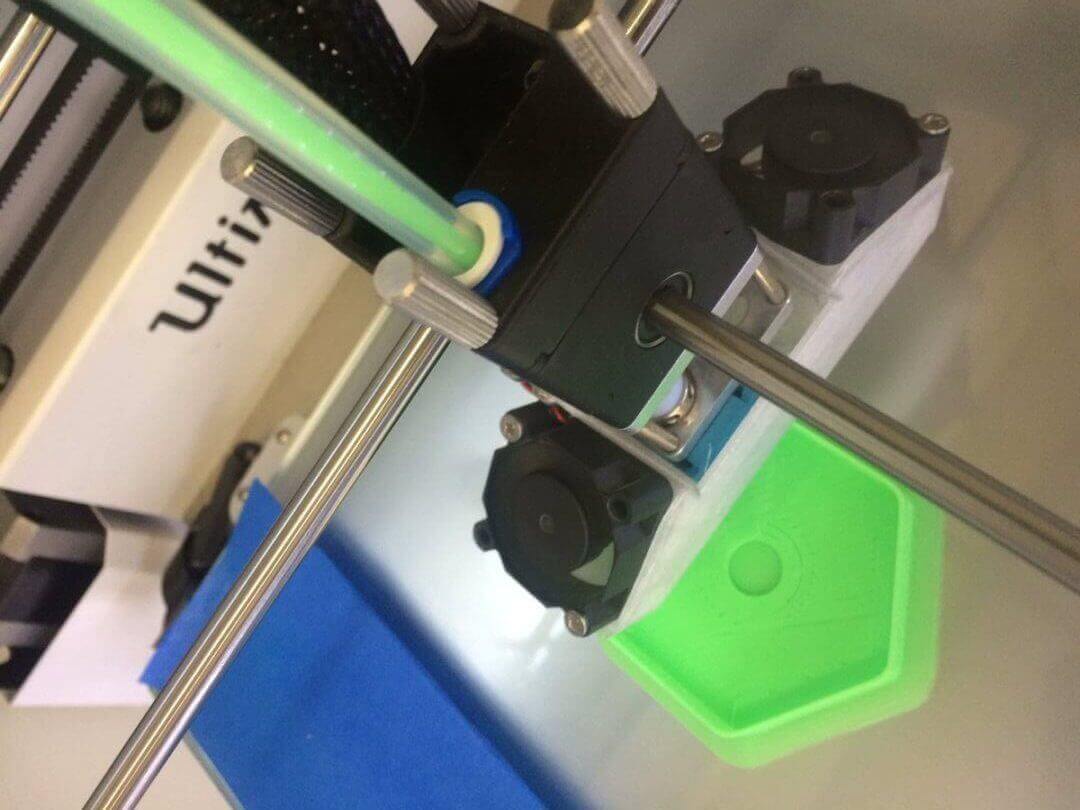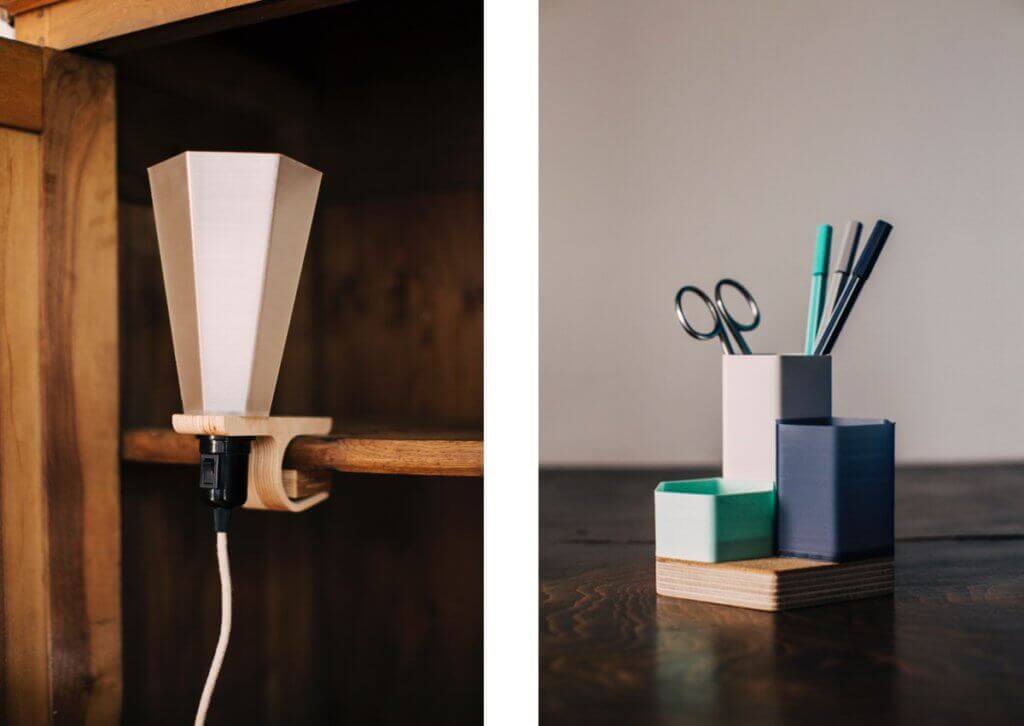London startup Batch Works have devised an ingenious perpetual printing process for a standard Ultimaker 2+, and it’s completely open source.
Don’t Miss: Print Plus DIY Headphones Review: Pump Up the Volume
Deep in the bowels of Hackney, in the city of London, there is a road known as the Maker Mile. Dotted along Vyner Street between Bethnal Green and London Fields stations are open workshops, tech startups, artist and design studios, fabricators, galleries, shops and businesses.
Batch Works is just one of many promising startups to be found here, headquartered in the Machines Room makerspace. Since May 2016, the duo of Dylan Bahnan and Julien Vaissieres have been crafting well made furniture with digital fabrication technology. One of their earliest successes is the PLYSET lamp, a DIY kit consisting of a shade 3D printed with recycled PET plastic.
It was the demand for this lamp, however, that presented the team with something of a challenge. With over 200 orders to satisfy, using hand tools would be time-consuming, while outsourcing to a mass manufacturer would be too expensive. Batch Works looked to FFF (fused filament fabrication) 3D printing for the answer.
But even with several Ultimaker machines at their disposal, it didn’t fully resolve the problem. “The funny thing we found about using digital machines,” explains Bahnan, “is that often the person using it becomes a machine themselves after the 50th lampshade had lost its novelty.”
Each time the 3D printer had finished an object, it had to be manually removed from the build plate, checked for defects, and then the printer would be fired up again for the next object.
“What started as an intention to get our hands dirty boiled down to machine minding which didn’t feel a lot like making, ” Bahnan continues. “After the 300th we knew something had to be done.”
What they actually did is ingenious. They hacked an Ultimaker 2+ 3D printer into a perpetual printing machine, allowing them to reliably print product after product. This enabled them to leave their machines to operate unattended while they continued to work on other things.
The perpetual printing process is broken down into four stages; purge, print, push and catch. Each stage requires a series of subtle modifications which are applied to a stock Ultimaker 2+.

Batch Works Explain the Perpetual Printing Process
The first stage, the purge, is important to ensure that the object being printed has the perfect first layer.
A standard FFF machine will prime the nozzle by purging old plastic onto a corner of the print bed. For the perpetual printing process, the printer purges onto a different area of the print bed before a new job is commenced. A line of 3mm blue plastic tape on the left side of the print bed captures each new purge.
For the next stage, printing, Batch Works have applied some custom mods to their Ultimaker; a Bondtech extruder for more reliable performance, and a 1mm nozzle with silicon socks. The size of the nozzle is significant; printing objects at 800 microns produces structurally stronger items (because there are fewer layers which require bonding). It also dramatically reduces printing time.
Another modification is the temperature of the print bed is cooled down from 60 degrees to 42 degrees after 20 layers. This is most important for the third stage, the push.
Bahnan notes that “this is by far the most temperamental part of the process”. To work properly, the print bed must cool down further so the object is no longer stuck to the bed. A delay is added before the push begins so that it has time to reach at least 28 degrees. When ready, a special bumper attached to the print head will move into position behind the object. It slowly nudges it off the bed.
Finally, there’s the catch. A flexible slide attached to the edge of the print bed prevents finished prints from falling under the bed. A waiting basket stops items from falling to the floor. With the job complete and the bed clear of obstruction, the printer begins fabricating the next item.

Auto Print Technique is Open Source
Batch Works devised the perpetual printing technique as a solution to their own unique situation. And in successfully delivering their PLYSET lamps to happy customers and clients, they’ve proven that it works.
The team are now eager to share this innovation with the open source community. To this end, they’ve documented the process under a Creative Commons license and invited other makers to take it further.
An initial challenge is that the process is built around an Ultimaker machine. Could the same principles be applied to a Lulzbot Taz 6 or Original
“We really believe in the power of this kind of people centric practice and the good things that can happen when it is shared,” says Bahnan. “Since the 3D printer community laid the foundation for us, we decided it is only fair to return the favour.”
Visit the Batch Works site to learn more about their story, and the exciting projects they’ve been working on. They’re also participating in a Friday Late event at the Victoria and Albert Museum in London on 28 July. Click here for further details.

License: The text of "Batch Works use Ultimaker 2+ as a Perpetual Printing Machine" by All3DP is licensed under a Creative Commons Attribution 4.0 International License.